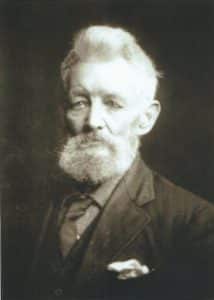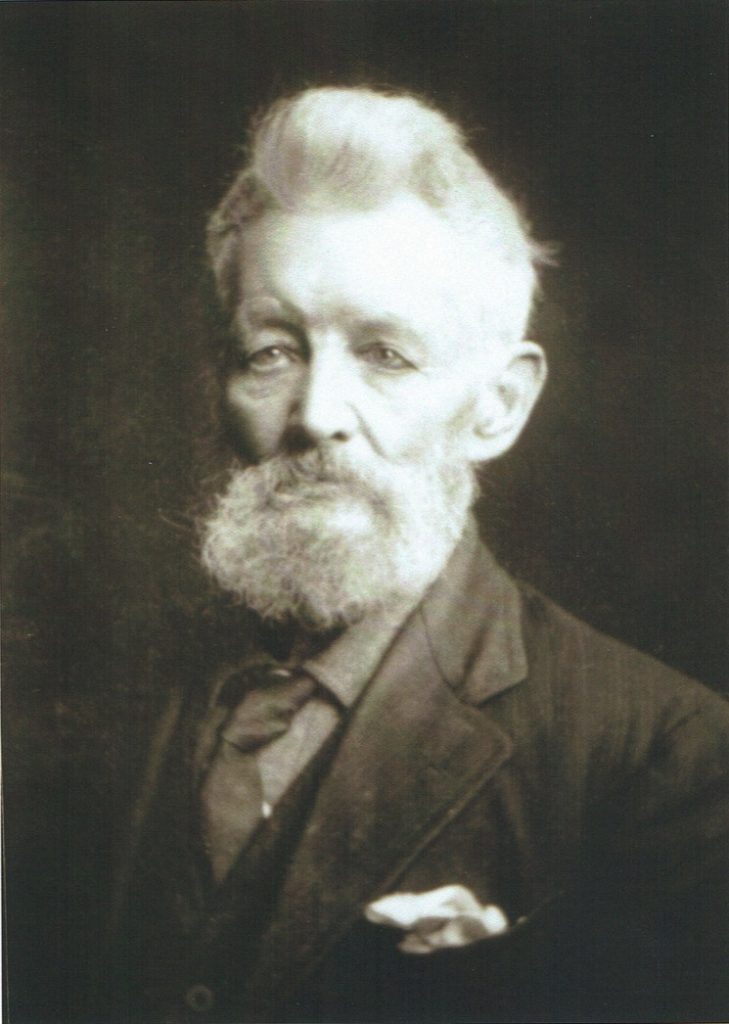General History, Napa, People, Tidings
“Always Ready to Render Assistance”: Emory Mount in Napa
This article was published in the Vol. 23, No. 2 edition of Tidings, our quarterly newsletter. To get your copy of Tidings, become a member today!
by Marie Bowen

In 1854, a 17 year-old Ohioan, Emory Augustus Mount, arrived in Napa. He likely had come to visit his uncle, Joseph Mount, a merchant in partnership with Edward Cotterill. Emory stayed on in Napa, later joined by his brother Timothy, founder of Napa Building and Loan. In 1921, aged 83, Emory recalled his early days in the city in Napa as I Saw It in 1854. Reading it, I felt I had been in Napa with Emory. The document provides an eye-witness view of 1850s life in Napa almost literally street by street. Additionally, Emory describes his personal participation in the Civil War on the “home front.” (He formally registered for the Civil War Draft in Napa, 1 July 1863, but remained in Napa because few troops were drafted from California.)
There were both Union and Confederate supporters in Napa before and during the Civil War. The pro-Union Napa County Reporter in 1863 urged the organizing and arming of “loyal citizens of the State…so far as to be able to quell any attempts at rebellion.” In Emory’s manuscript essays, “Military Aspect of Napa during the Civil War” and “The Napa Guard and Napa Rangers, 1861-1867,” he states that, after Lincoln’s election in 1860, Napa realized that war would follow. Actually, the first election of the Napa Guard occurred November 23, 1857, but perhaps Emory did not join the Guard until 1861. (The Napa Rangers were a separate cavalry unit.) These volunteers wished to keep California in the Union, and they remained “at the ready” throughout the war, also performing at parades and other public functions.
The Guard drilled five nights a week at James Hall, at the southeast corner of First and Brown Streets. By 1862, its membership exceeded 150 volunteers. That same year, Emory and about thirty others of the Guard withdrew and organized Washington Light Battery “B,” an artillery company replete with two guns. Emory was one of two corporals and, as he wrote in 1921, “I think I can safely say that I am the only living member of the Washington Light Battery ‘B’.”
Their first meeting was at the Hemingway Blacksmith Shop on Main Street, the future site of the Conner Hotel. The Battery remained under control and orders of the United States government for five years until the members were mustered out in 1867. As of 1864, the Battery had moved from Hemingway’s to the Armory, where the city provided the group with a three-month allowance of $750. At that time, it was one of only two artillery companies in California, the second one being in San Francisco. In Emory’s words, “we were…always ready to render assistance, whenever needed.”
Emory reports that in 1862 a plan was uncovered in Napa to “capture the Navy magazine at Mare Island” by several local southern sympathizers, known as Copperheads. Because the perpetrators were overheard, guards were posted “on every avenue coming to Napa,” and the plot deflected. This event may or may not have been the situation that occurred the following year. The pro-Union Napa County Reporter in the spring of 1863 reported the seizing in San Francisco of the schooner Chapman, loaded with artillery and powder kegs, along with leather bags from a local Napa store. The incident was part of a “large-scale plan involving some 200 men” who planned to “cut telegraph wires between Sacramento and San Francisco and take Napa City” before storming Mare Island. Union agents seized the Chapman in San Francisco and the plot was foiled.

Following President Lincoln’s death, Emory notes that one local Copperhead escaped lynching only because a rope was not immediately available. Another was slugged with his own whiskey bottle. When he revived, he and his family left town. The funeral sermon preached by the Rev. I. W. McClay at the Methodist Church following Lincoln’s assassination was attended by over 2,000 people, filling the church and the adjoining streets. Emory comments that the “dastard [sic] act [Lincoln’s assassination] did more to heal the wound than a dozen battles could have done. The rebels themselves renounced the act and ostracized the perpetrators.”
With the Battery disbanding in 1867, Emory returned to farming but continued to serve the community in various ways. In 1901, he was appointed School Census Marshal for the county superintendent of schools. He was a member of Napa’s “Company H” of the National Guard, perhaps since its 1893 inception, serving in San Francisco following the 1906 earthquake and fire. And in August 1908, he was appointed polls inspector in Precinct No. 2. Emory married twice and was the father of thirteen children. He died in Benicia, March 22, 1922, aged 84, and is buried at Tulocay Cemetery.
Reference List
Ancestry.com (various records and public family tree information)
Menefee, C. A. HISTORICAL AND DESCRIPTIVE SKETCH BOOK OF NAPA, SONOMA, LAKE AND
MENDOCINO. Napa: Reporter Publishing House, 1873
Mount, Emory A. “Napa as I Saw It in 1854” with separate essays, “Military Aspect of Napa During the
Civil War” and “The Napa Guard and Napa Rangers, 1861-1867.” Manuscript No. 15, Napa County Historical Collection.
Napa County Reporter, March 21, 1863 (as referenced in Lin Weber’s OLD NAPA VALLEY, p. 171)
Napa Valley Register. March 16, 1901, p. 3; August 24, 1908, p. 6; November 4, 1972, p. 14D
Palmer, Lyman L., Historian. HISTORY OF NAPA AND LAKE COUNTIES, CALIFORNIA. San Francisco:
Slocum & Bowen, 1881
Weber, Lin. OLD NAPA VALLEY. St. Helena: Wine Ventures Publishing, 1998
The Weekly Calistogian. May 18, 1904, page A3


